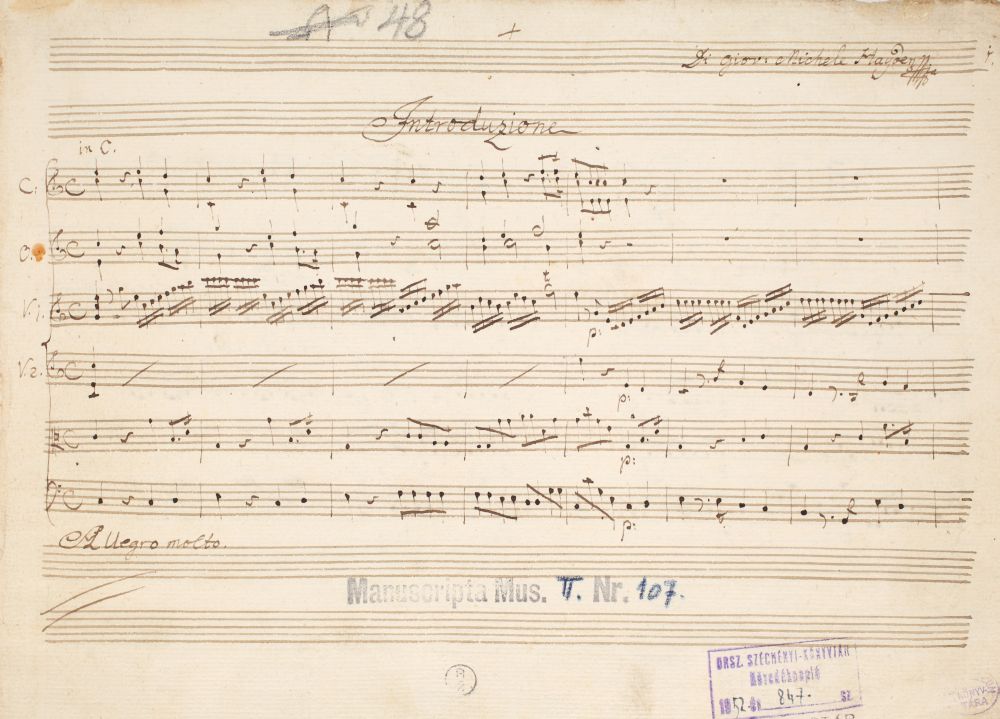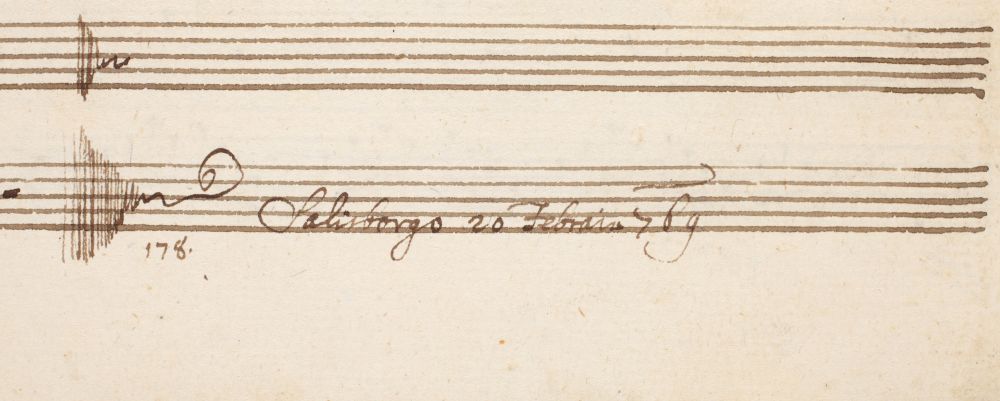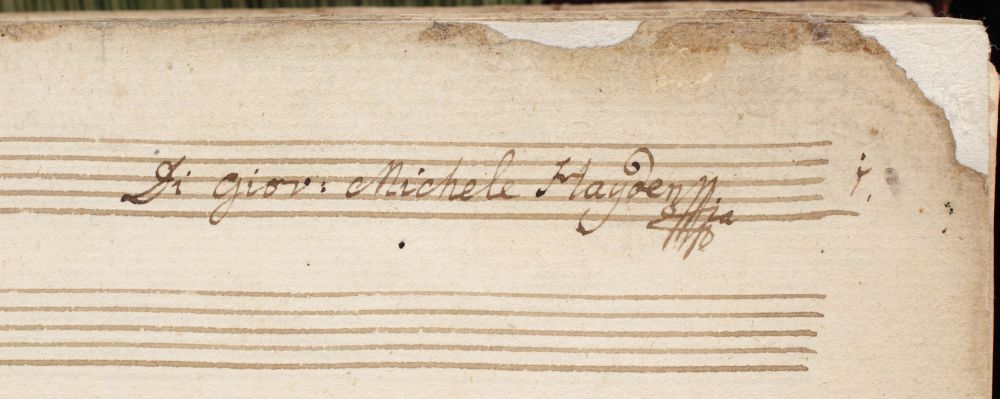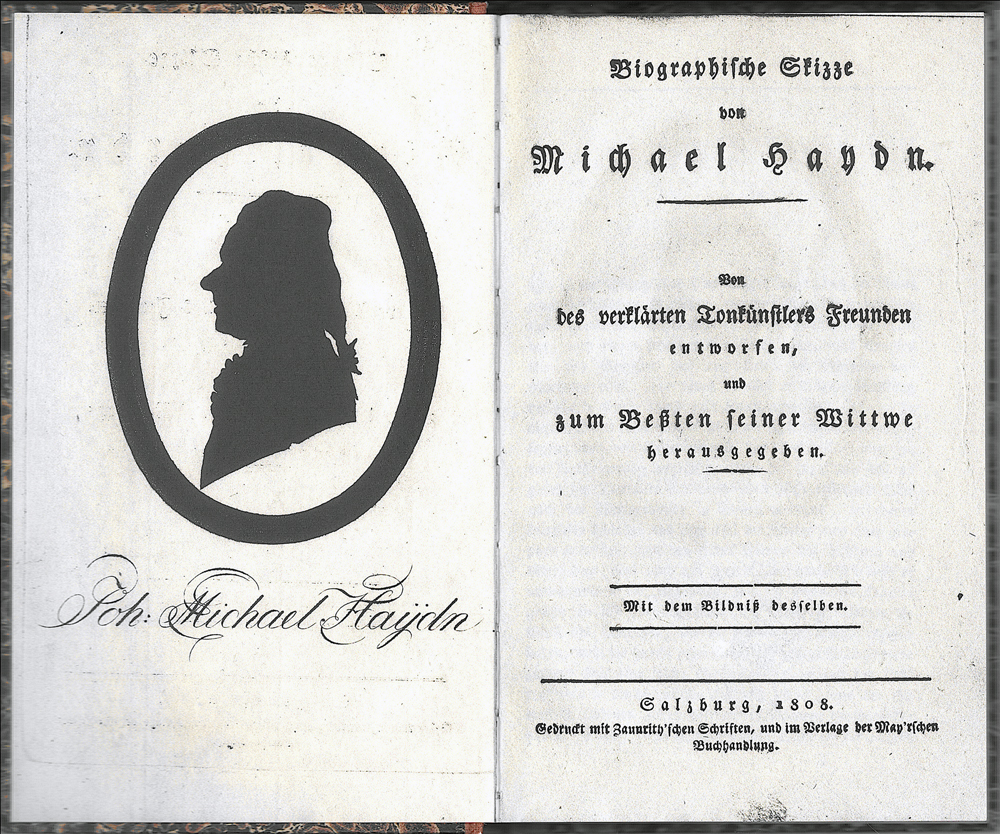
NSZL world premiere in Müpa Budapest
“The world’s most significant Haydn collection” – this is how the Music Collection of National Széchényi Library is usually referred to by foreign music historians. However, this characterization is at least ambiguous, since hearing the name “Haydn”, we are likely to think of Joseph Haydn (1732–1809) whose merits earned in the creation of classical symphony and string quartet are mentioned even in primary school music textbooks.
However, in musician circles the other Haydn, Michael who was five years younger than his brother Joseph has been highly appreciated. After his death in 1806, Michael Haydn’s bequest was purchased, presumably at his brother’s request, by the Esterházy princely family for their own music archive. More than 150 years later, the precious collection got into National Széchényi Library, so today NSZL’s Music Collection is really “the world’s most significant Haydn collection”, as far as both Haydn brothers are concerned.
 György Vashegyi has been dealing with the oeuvre of not only Joseph but also of Michael Haydn for quite a while. His attention was especially drawn by four religious oratorios composed between 1768 and 1771, the original autograph manuscripts of which survived in the bequest held by National Széchényi Library. Out of them, “The Battle of Penance and Conversion” (Der Kampf der Busse und Bekehrung, 1768) and “The Penitent Sinner” (Der Büssende Sünder, 1771) have already been conducted by Vashegyi. On May 27, 2016 “The Campaign and Victory of Emperor Constantine I” (Kaiser Constantin I. Feldzug und Sieg) was performed which, according to the dating at the end of the autograph manuscript, was finished by the composer on February 20, 1769. The date tells us a lot, since theaters were traditionally closed during the Lenten period, and this was the time when oratorios (as kind of “opera substitutes”) were performed, as they required no stage, yet they could be played dramatically.
György Vashegyi has been dealing with the oeuvre of not only Joseph but also of Michael Haydn for quite a while. His attention was especially drawn by four religious oratorios composed between 1768 and 1771, the original autograph manuscripts of which survived in the bequest held by National Széchényi Library. Out of them, “The Battle of Penance and Conversion” (Der Kampf der Busse und Bekehrung, 1768) and “The Penitent Sinner” (Der Büssende Sünder, 1771) have already been conducted by Vashegyi. On May 27, 2016 “The Campaign and Victory of Emperor Constantine I” (Kaiser Constantin I. Feldzug und Sieg) was performed which, according to the dating at the end of the autograph manuscript, was finished by the composer on February 20, 1769. The date tells us a lot, since theaters were traditionally closed during the Lenten period, and this was the time when oratorios (as kind of “opera substitutes”) were performed, as they required no stage, yet they could be played dramatically.
 Michael Haydn’s composition was performed again almost 250 years after its original premiere. The second part of the concert in Müpa Budapest included more familiar works such as “Exultate, jubilate” (Exult, rejoice), K. 165, by Wolfgang Amadeus Mozart and the so-called “Coronation” Mass in C major, K.315 by Mozart. These works were included in the same program not only because they had been composed at periods very near to each other, but also because there had been a close relationship between their composers. Michael Haydn, often referred to as the “Hadyn of Salzburg”, had an everyday relationship with Mozart, and the style of his religious compositions can be traced back in similar works composed by his young fellow composer.
Michael Haydn’s composition was performed again almost 250 years after its original premiere. The second part of the concert in Müpa Budapest included more familiar works such as “Exultate, jubilate” (Exult, rejoice), K. 165, by Wolfgang Amadeus Mozart and the so-called “Coronation” Mass in C major, K.315 by Mozart. These works were included in the same program not only because they had been composed at periods very near to each other, but also because there had been a close relationship between their composers. Michael Haydn, often referred to as the “Hadyn of Salzburg”, had an everyday relationship with Mozart, and the style of his religious compositions can be traced back in similar works composed by his young fellow composer.
 The modern world premiere of “Kaiser Constantin I. Feldzug und Sieg” could also be watched live, from the comfort of an armchair, on the website of Müpa Budapest.
The modern world premiere of “Kaiser Constantin I. Feldzug und Sieg” could also be watched live, from the comfort of an armchair, on the website of Müpa Budapest.




